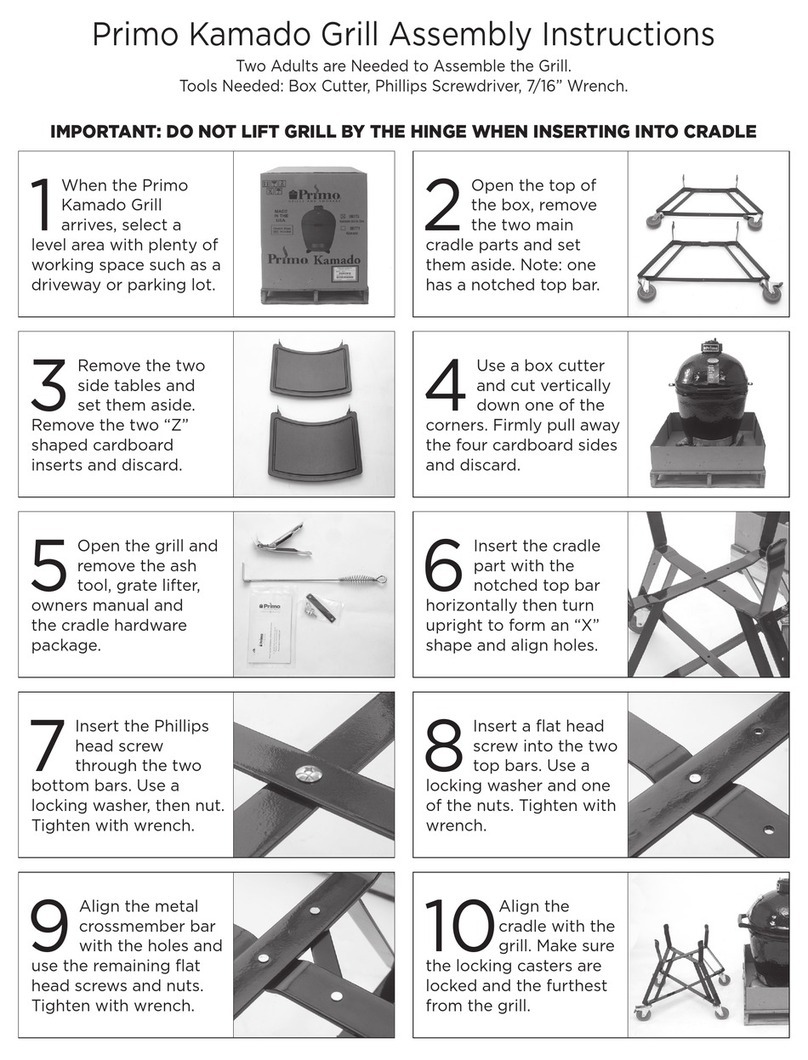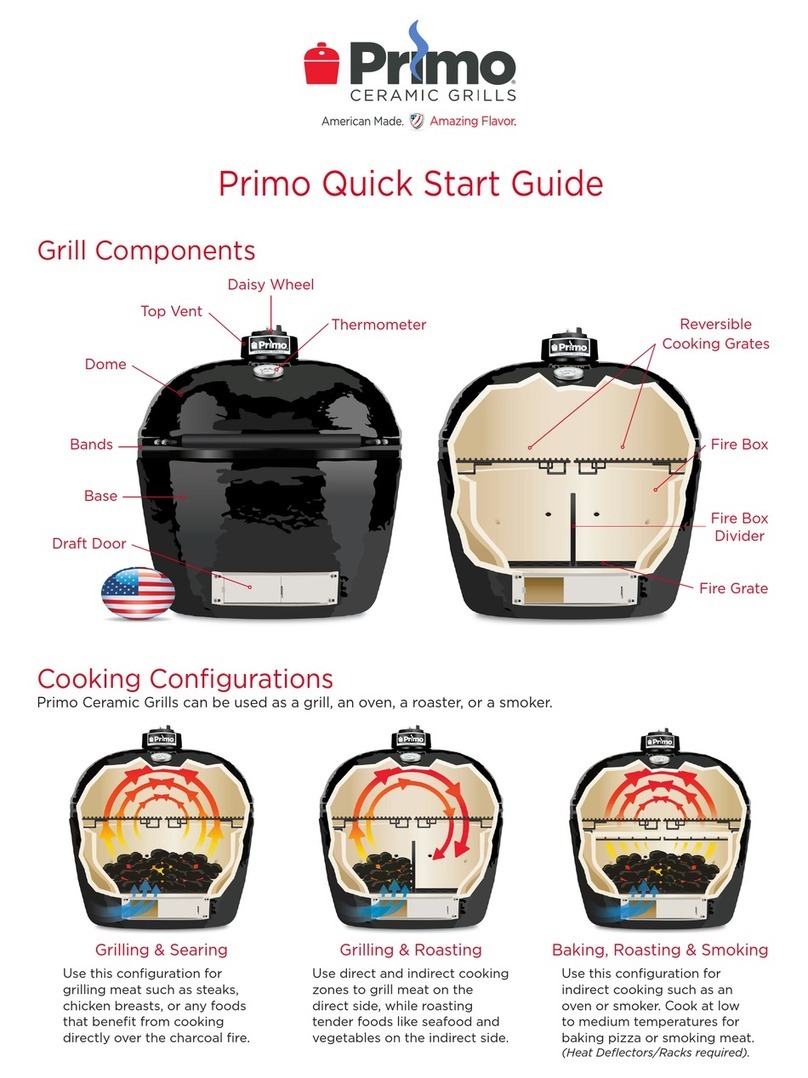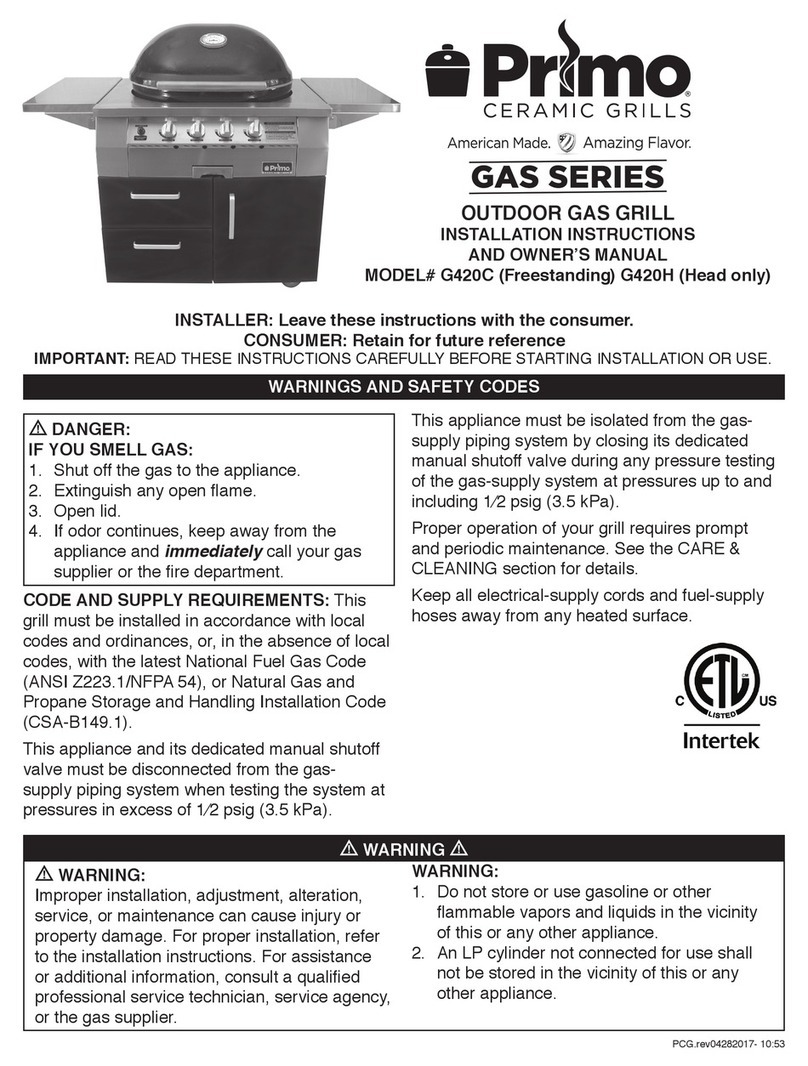Primo Water Oval BBQ Smoker - Junior User manual
Other Primo Water Grill manuals

Primo Water
Primo Water KAMADO User manual

Primo Water
Primo Water OVAL XL User manual

Primo Water
Primo Water PG00773 User manual

Primo Water
Primo Water Kamado 771 User manual

Primo Water
Primo Water G420C Quick start guide

Primo Water
Primo Water OVAL XL User manual

Primo Water
Primo Water AB661 Operating and maintenance manual
Popular Grill manuals by other brands

Landmann
Landmann Avalon PTS Plus 5.1 Plus 12122 Assembly and operating manual

Kenyon
Kenyon B70200 owner's manual

Better Homes and Gardens
Better Homes and Gardens GBC1486W owner's manual

Orbegozo
Orbegozo GR 2300 instruction manual

bora
bora PT11 Operating and installation instructions

Klarstein
Klarstein 10031664 manual

Garland
Garland MWE3W Installation and operation manual

Char-Broil
Char-Broil 463722714 Product guide

MPM
MPM MOP-03 user manual

Kenmore
Kenmore 415.16123800 Use and care guide

Tucker Barbecues
Tucker Barbecues GTR Series Assembly, installation and operating instructions

Monogram
Monogram ZGG540NCP1SS owner's manual







